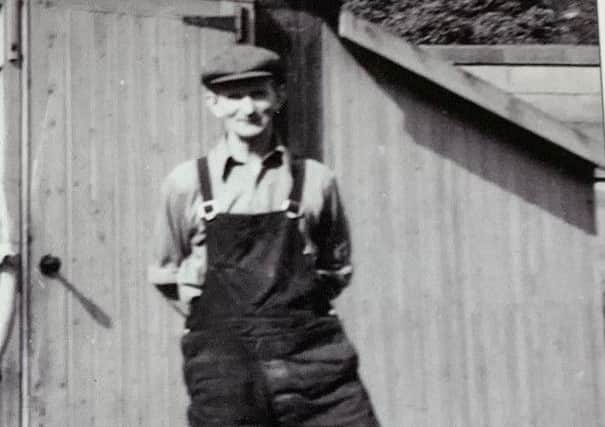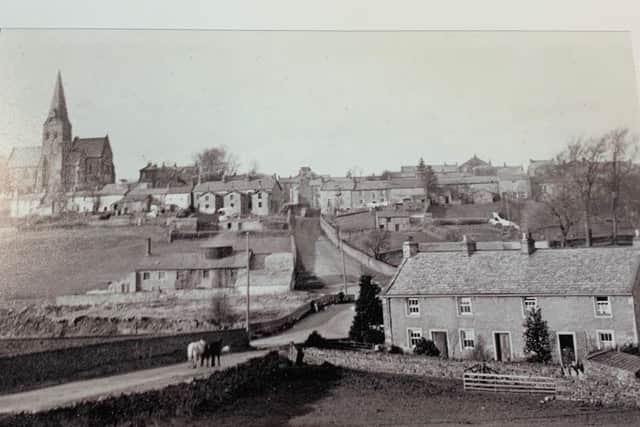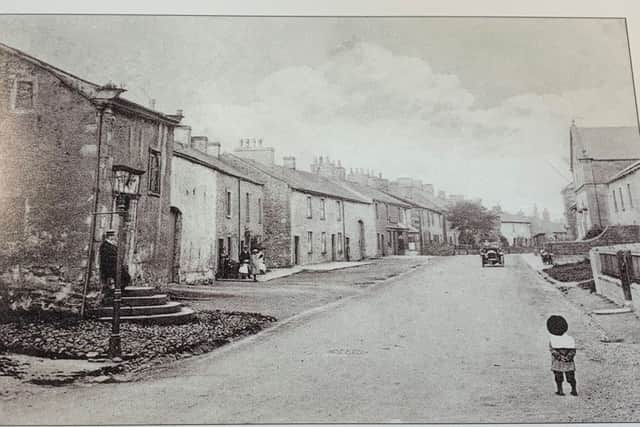School days when the leaving age was just 13


Stone Bower, a large Georgian-style house adjoining the village green near to All Saints Church in Burton-in-Lonsdale, was built in 1837 by Grace Hetherington, who was a forerunner of the Thornton family who built Thornton’s Endowed School and All Saints’ Church. Richard Thornton built the schools around 1870.
His nephew Thomas Thornton erected the church around the same time, which was built on the site of his birthplace. A row of old cottages were there previously.
Advertisement
Hide AdAdvertisement
Hide AdBefore the church was built the village was served by a Chapel of Ease, which was situated in the old churchyard, between Stone Bower and Chapel Lane and was under the authority of the parent church of Thornton-in-Lonsdale.


The main entrance was from Chapel Lane where the old iron gates still stand, and the approaching steps form an arc and lead up into the chapel and the churchyard.
From the Stone Bower the approach was through the lych-gate and was probably used by the Hetheringtons and Thorntons.
Richard Thornton endowed the schools, but for some reason or other Thomas did not endow the church, which would now have been of great help in the extensive repairs found to be necessary to the roof and steeple.
Advertisement
Hide AdAdvertisement
Hide AdThe schools were built with the two houses, one for the headmaster and one for the headmistress, adjoining one another and facing east.


The girl’s school adjoined the headmistress’s house with its internal connecting door opening direct into the larger room and occupying the northern site of the block. The boy’s school occupied the south site of the block, thereby getting all the sun.
A bit of bad planning I think just so as to have the two east windows facing the east, for religious requirements.
I think it would have been okay with God if the east windows had faced north, so long as the girls got their due share of the sunshine.
Advertisement
Hide AdAdvertisement
Hide AdBoth schools were built alike in size and style except that they were opposite hands, one right hand and one left hand.
There were plenty of good big windows in the sides.
Strengthening the walls were several flying buttresses, stoutly built and quite ornamentally designed.
Trees of willow, beech, yew and spanish chestnut were planted in both schoolyards, and positions of eaach matched in both cases as near as possible,
Children from seven to 14 attended, most of us leaving at 13 if we qualified for attendance and progress.
Advertisement
Hide AdAdvertisement
Hide AdPrior to this we had been trained at the infants school in the village, this being the Church Sunday school in High Street at the top of Chapel Lane.
family
Somewhere around 1907 it was decided to mix the schools.
The older classes of girls from Standard 3 upwards were brought into our school whilst the Standards 1 and 2 boys were mixed in with the girls of their group who were left behind.
The infants school was then vacated and all brought up to fill the school with the junior boys and girls.
I had therefore to ‘pull up my socks’ as I found them very well educated and quite liable to outstrip us. A few years after I left the school in 1908, another wing was added to the mixed school, doubling its capacity and it was fully intended by the school managers to add a similar extension to what had been the girls school and restore the balance.
Advertisement
Hide AdAdvertisement
Hide AdOur family came to live in the house on the opposite side of High Street to Stone Bower in August 1895 when I was four-months-old.
So the earliest recollections I have are of Stone Bower looking down on us from across the street as we all played our games in the yard adjoining. We were a family of five boys and five girls and I often think what a godsend that yard was to mother, to keep us all safe and within bounds and outside from under her feet for just a vestige of peace.
Our house had to house a total of 14 regular residents as my grandfather and a bachelor uncle lived with us also.
Stone Bower was tenanted in the earliest days, I remember, by Alec Burrow Esquirem a bachelor.
Advertisement
Hide AdAdvertisement
Hide AdHe and his two unmarried sisters lived together there for a few years.
Their brother, Thomas Burrow, with his wife and family (two daughters) lived down at Wrayton.
Their daughters did not attend our elementary school but used to drive up to and from the village to attend private school at The Homestead in Low Street kept by Miss Charlotte Thatham, her mother, and her aunt, Miss Harris.
My parents used to speak of the previous owner who lived at Stone Bower for many years.
Advertisement
Hide AdAdvertisement
Hide AdShe was Mrs Eleanor Simpson Bond who was a Thornton by birth and who was a sister of Mrs Rhodes who came to reside there later.
We hear little or no mention of Mr Bond being referred to as ‘Old Cloggy Bond’. Whether this referred to his footwear or his habits I don’t know, but he did not appear to have been of any importance or interest.
Mrs Bond was evidently a very tiny person, practically a midget, and was attended by a staff of very faithful and able servants.
James and Sabina Oddy of Low Bentham (where their father farmed a small farm) were two of her trusted servants. George Lumb of Burton-in-Lonsdale served her well. He later had a thriving bakery business in Ingleton, assisted by his son and daughters. They were all Wesleyan Methodists. Mrs Bond also attended the Wesleyan Chapel with them.
Advertisement
Hide AdAdvertisement
Hide AdThey sat each side of her and had to lift her on and off her seat like a child as she was too small to get up and down herself.
Her headstone is to be found in the old churchyard.She is buried not many yards away from the lych gate. Around 1903-4 the Reverend Charles Rhodes and Mrs Rhodes came to reside in Stone Bower.
He was a retired congregational minister, she was Alice Greenwood Thorton prior to her marriage to him, and was sister to Mrs Bond. She was a very devout woman, and much nicer to know then he.
HYMNS
She held prayers morning and evening for the household in the dining room which was the corner downstairs room near the big evergreen tree. She played her American organ in there and sang as she played the hymns. Her voice was powerful, strong and loud and always a semi-tone below pitch.
Advertisement
Hide AdAdvertisement
Hide AdIt was compulsory for all the staff to attend prayers at all times.
Their duty too, was to deliver religious tracts free to every house in the village.
When walking out in the village she would stop and address any villager she happened to meet, and say, “My text for today, is ------”
They had no family of their own, but had brought up a Scottish lassie who became their ward.
Advertisement
Hide AdAdvertisement
Hide AdShe was Janette Allison Innes and was full of jolly exuberant youth, which would burst out at times then she would have to withdraw into herself when in their presence.
She must have been bored to tears. How she loved to exchange a bit of banter over the boundary railings under the big evergreen tree with some of the local lads of her age, and who could blame her, when the ‘coast was clear.’ The Rhodes had a winter residence in the sunny south down at Sidmouth in Devonshire.
When they came up to Burton-in-Lonsdale they brought two maids, cousins, from a fishing village called Branscombe, Rose (housemaid), Bertha (cook). Their fathers were fishermen.
So each autumn all went down to Devon and returned in the spring. The maids became friendly with my elder sisters and so spent many happy evenings among us all. As might be expected, Rose became our first sister-in-law, and she and my brother settled in the district.
Advertisement
Hide AdAdvertisement
Hide AdBertha married her fiance a market gardener, who bought a large market garden at Badsey in the Vale of Evesham where they built a new house and named it ‘Lonsdale’ as a tribute and reminder of happy associations at Burton-in-Lonsdale.
Vicar
In the early years at Badsey Bertha got to know the vicar there Mr Binyon. (The famous Lawrence Binyon, who became famous in World War 1 was one of the family). During conversation when she mentioned Burton-in-Lonsdale, he said that his father was earlier Vicar of All Saints Church, Burton-in-Lonsdale.
I think the elder Mr Binyon was the first vicar of Burton-in-Lonsdale.
Stone Bower had a very nice kitchen garden with vines in a greenhouse.
Advertisement
Hide AdAdvertisement
Hide AdIt supplied the household requirements and was tended by Simon Horner, gardener and coachman.
In latter years the garden has been added to the churchyard.
The stable and coach-house stood at the head of the garden, facing the square belonging to Stone Bower, which lies between the old churchyard and the eastern end of the church. They were later dismantled and taken stone by stone and re-erected round to the east side of Stone Bower facing High Street.
It replaced an old house which stood on the site.
*Next week William James Skeats has more recollections of life and the characters in Burton-in-Lonsdale in the early 20th century.